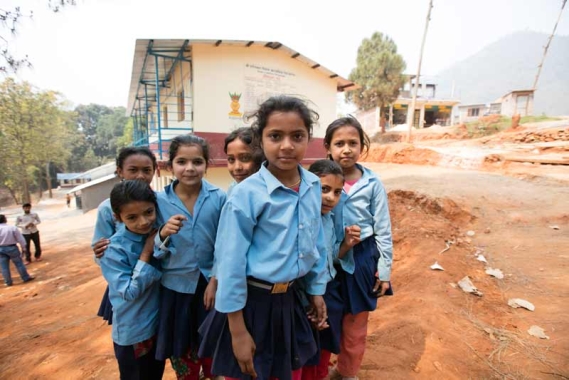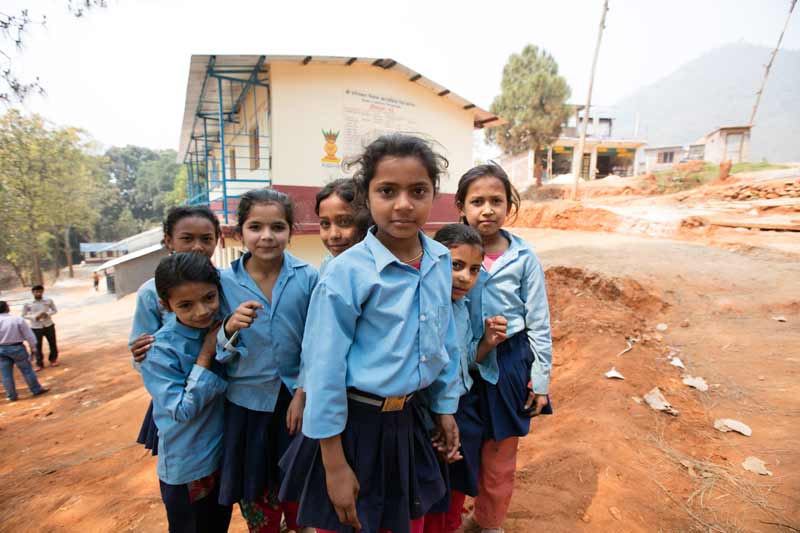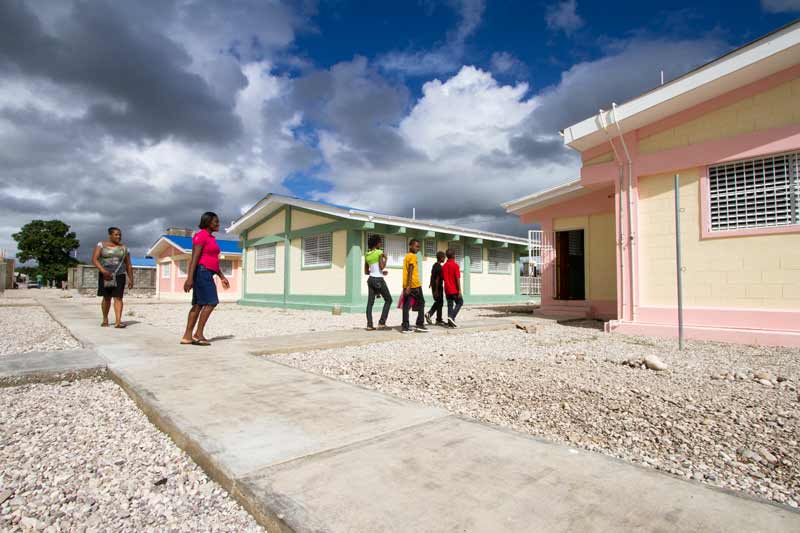Built to last: SOS Children’s Villages keeps children safe against natural disaster

Recent emergencies in the Philippines, Nepal and Haiti show the value of sound construction.
When a natural disaster hits an SOS Children’s Village, the ability of its infrastructure to resist the forces of nature is crucial to keep the children and staff safe. That no fatalities from natural disasters have been reported in the organization's history is testimony to the construction standards it maintains.
On 8 November 2013, Super Typhoon Haiyan wreaked havoc in the city of Tacloban in the east-central Philippines. The 101 children and their mothers of SOS Children’s Village Tacloban climbed into the ceilings of their homes while floodwater swept through the rooms below and strong winds tore at the roofs. The ceiling frames were strong enough to support the weight, with no injuries reported, as the children were evacuated to SOS Children’s Village Calbayog as soon as the storm subsided.
“The houses were built to withstand winds of 250 km/h. Typhoon Haiyan reached wind speeds of up to 350 km/h, probably the strongest ever recorded in the world,” said Ashish Bansal, Deputy Director Construction for the SOS Children’s Villages International Office Asia.
The homes and buildings of SOS Children’s Village Tacloban were the only ones left standing in the immediate area. Although water damaged the furniture and ceilings, and mud clogged the drains, all the walls, as well as the roof and ceiling framing, remained intact. The plywood ceilings were replaced with compressed fibre-cement sheets during the restoration process, but the other structural elements remained the same, Mr Bansal said.
Due to their resilient construction, SOS Children’s Villages often becomes a haven for families from the surrounding communities during a natural disaster. In Calbayog, north of Tacloban on the island of Samar, more than 30 families found shelter in the vocational training centre during Typhoon Haiyan.
Home reconstruction nears completion
In total, more than one million families were affected by the typhoon. As part of its emergency relief program, SOS Children’s Villages is building more than 500 new typhoon-resistant homes. The last of the units are to be handed over in April 2017.
“Quality construction has been our philosophy right from the start”, said Michael Spuller, Head of Program Planning and Construction for SOS Children’s Villages International. “Not only is it important for safety, but our donors expect us to build solid, long-lasting structures. We always adhere to at least 100% of local standards, often exceeding them.”
Earthquakes in Ecuador, Nepal, Pakistan, and Haiti also underscored the need for quake-resistant construction in countries prone to such natural disasters.
“There is a difference between earthquake-proof and earthquake-resistant. The first option is too costly. Damage can still happen to an earthquake-resistant building, but it should be something that can be repaired”, said Gerhard Sattler, Construction Advisor and Architect for SOS Children’s Villages International.
Rebuilding homes in Nepal
In Nepal, no minimum building standards existed before the April 2015 earthquake, which left 600,000 people homeless. Even post-earthquake construction regulations do not match the earthquake-resistant designs proposed by SOS Children’s Villages Nepal. The organization is providing up to 250,000 Nepal rupees (2,100 EUR, 2,300 USD) per house to help 320 families rebuild their homes. The Nepal emergency program has also helped rebuild damaged schools.

While the initial cost of earthquake- and storm-resistant buildings may be higher, there are long-term savings in general maintenance and disaster-related repairs. Even so, SOS Children’s Villages manages to keep initial construction costs equal to or below international averages, said Mr Sattler.
Hermann Boehler, International Maintenance Advisor for SOS Children’s Villages, said building maintenance is now part of the organization’s strategic process. Inspection protocols are carried out twice yearly. Even if there is no visible damage from a natural disaster, the structure may be weakened. Systematic maintenance can help prevent further damage in case of another disaster.
Maintaining high construction safety standards while introducing alternative care is a new challenge for SOS Children’s Villages. Where existing buildings are rented or purchased, locally hired construction project managers oversee the quality control process, Mr Spuller said.
“We have a responsibility. Safe homes are our main consideration, followed by low maintenance. Our construction managers always strive for quality construction. We can be proud that no children have been killed [in a natural disaster],” he said.
How SOS Children’s Villages fared in recent natural disasters
In October 2016, Hurricane Matthew caused widespread flooding and structural damage in Haiti, affecting around 2.1 million people. While more than 750 schools were destroyed or badly damaged, according to Haiti’s Ministry of Education, the SOS Children's Villages School in Les Cayes sustained water damage and roof damage to eight of its 12 classrooms. In addition to repairing schools and community centres, SOS Children’s Villages also provides immediate emergency assistance to children and families through food parcels and health care.

No reports of major structural damage to SOS Children’s Village buildings were received after a 7.8-magnitude earthquake struck Ecuador’s coast in April 2016. The organization has villages and programs in Pedernales and Portoviejo, two of the hardest-hit communities. SOS Children’s Villages is working with the government and other agencies to help affected families rebuild their lives. This includes health and emotional care, protection, and building long-term resilience. On 19 December 2016, a 5.7-magnitude earthquake hit the Ecuador coast, causing moderate damage in several communities and further rattling a region still recovering from the April quake. SOS Children’s Villages Ecuador reported no damage to its Esmeraldas Village, the closest to the epicentre. However, the organization responded by providing support to children and staff dealing with nervousness and stress resulting from aftershocks.
After the 2010 earthquake in Haiti, SOS Children’s Villages set a new standard for mid-term emergency housing with its “Global Village Shelters”. The rigid, fully enclosed structures were erected to house some of the over 300 unaccompanied and/or orphaned children who found refuge at SOS Children’s Village Santo after the devastating earthquake. The shelters, complete with doors and windows, were designed to remain dry and secure during the rainy season. No major damage to the Santo village infrastructure was reported after the catastrophic magnitude-7.0 earthquake.
The largest emergency relief and reconstruction program undertaken by SOS Children’s Villages was in response to the 2004 tsunami in India, Sri Lanka, Indonesia and Thailand. In India, the architects responsible for designing and building 600 new family homes on behalf of SOS Children’s Villages were featured in a Harvard Business Review report (17 February 2009). Mistry Architects’ so-called tsunami villages were recognized for their innovative character and high construction standards.
